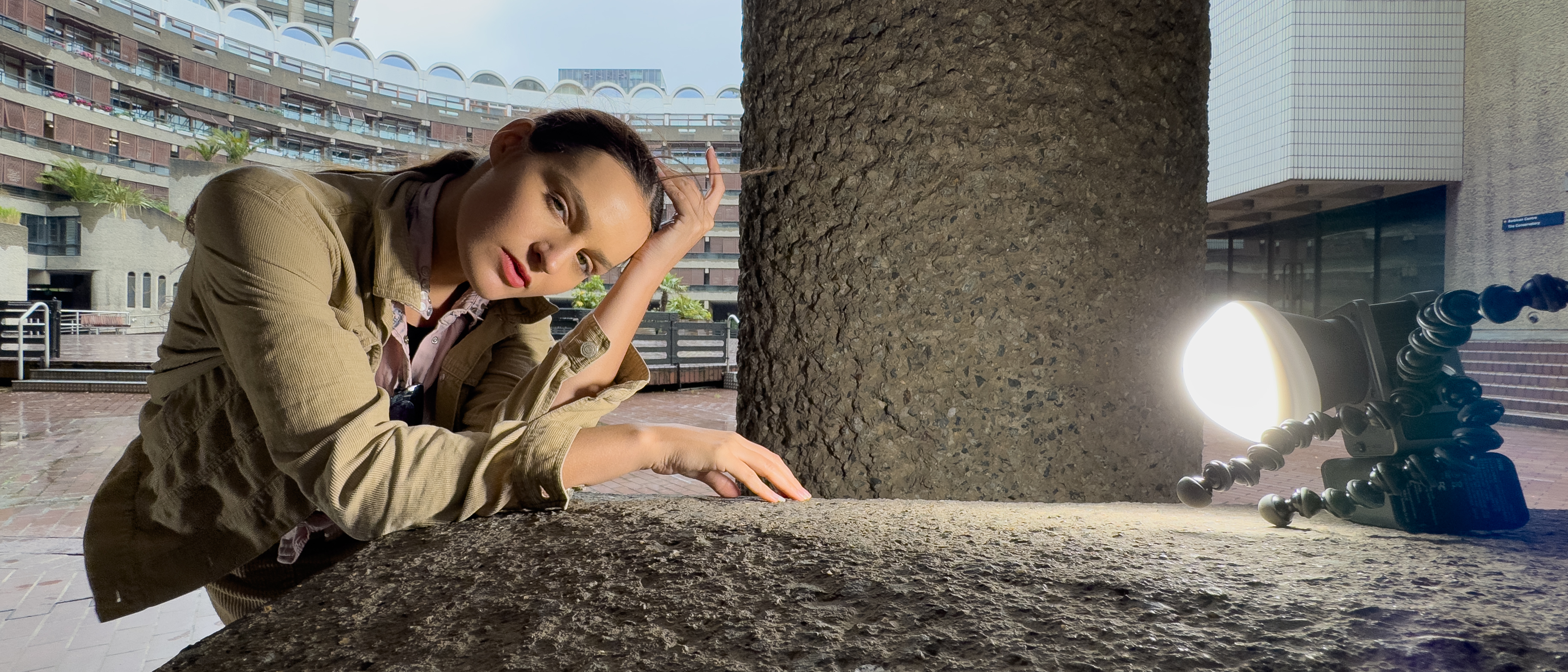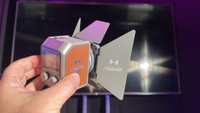Digital Camera World Verdict
The Zhiyun Molus X60 and X60 RGB are small enough to pop in your kit bag yet powerful enough to add strong key and fill lights to your portrait shoots (or animated lighting effects to your video shoots). As there’s not a huge price difference between them you’re better off purchasing the RGB model (instead of the standard one) as this enables you to add colorful lighting effects to your stills without needing to swap gels.
Pros
- +
Lightweight and portable
- +
Powerful light source
- +
Animated lighting effects (in the RGB version)
- +
Wide range of color temperatures
Cons
- -
No animated color gel effects in the standard X60 version
Why you can trust Digital Camera World
The Molus X60 (and the Molus X60 RGB) are COB (Chip-on-board) lights from Zhiyun, a well-established designer and manufacturer of LED lights. Unlike traditional flash guns, the best LED lights are ‘always on' during a shoot rather than being triggered to sync with the camera’s shutter. This makes them suitable for capturing both well-lit stills and video clips. As with flash guns, an off-camera LED light can emphasize the shape and form of a model’s face to create a three-dimensional portrait (rather than the flat-lit two-dimensional look produced by an on-camera flash). An LED can also be used to fill in harsh shadows caused by a key light such as the sun.
The key difference between the two Molus X60 lights is their ability to emit color. The X60 can produce a range of different color temperatures between a warm 2500K to a cool 6500K. The slightly more expensive X60 RGB boasts the same color temperature range output, but you can also adjust its hue and saturation to produce a wide range of gel-like colors. The RGB version also boats a wider range of animated lighting presets that involve color (such as Disco or Hue Loop).
At the time of writing the Molus X60/X60 RBG is the latest in Zhiyun’s comprehensive Molus range. The bulkier and heavier Molus G200 that I reviewed back in 2023 is designed for mains-powered studio shoots, whereas the newer battery (or power bank) powered X60 range provides strong key or fill light sources in any location, yet is small enough to fit in your kit bag.
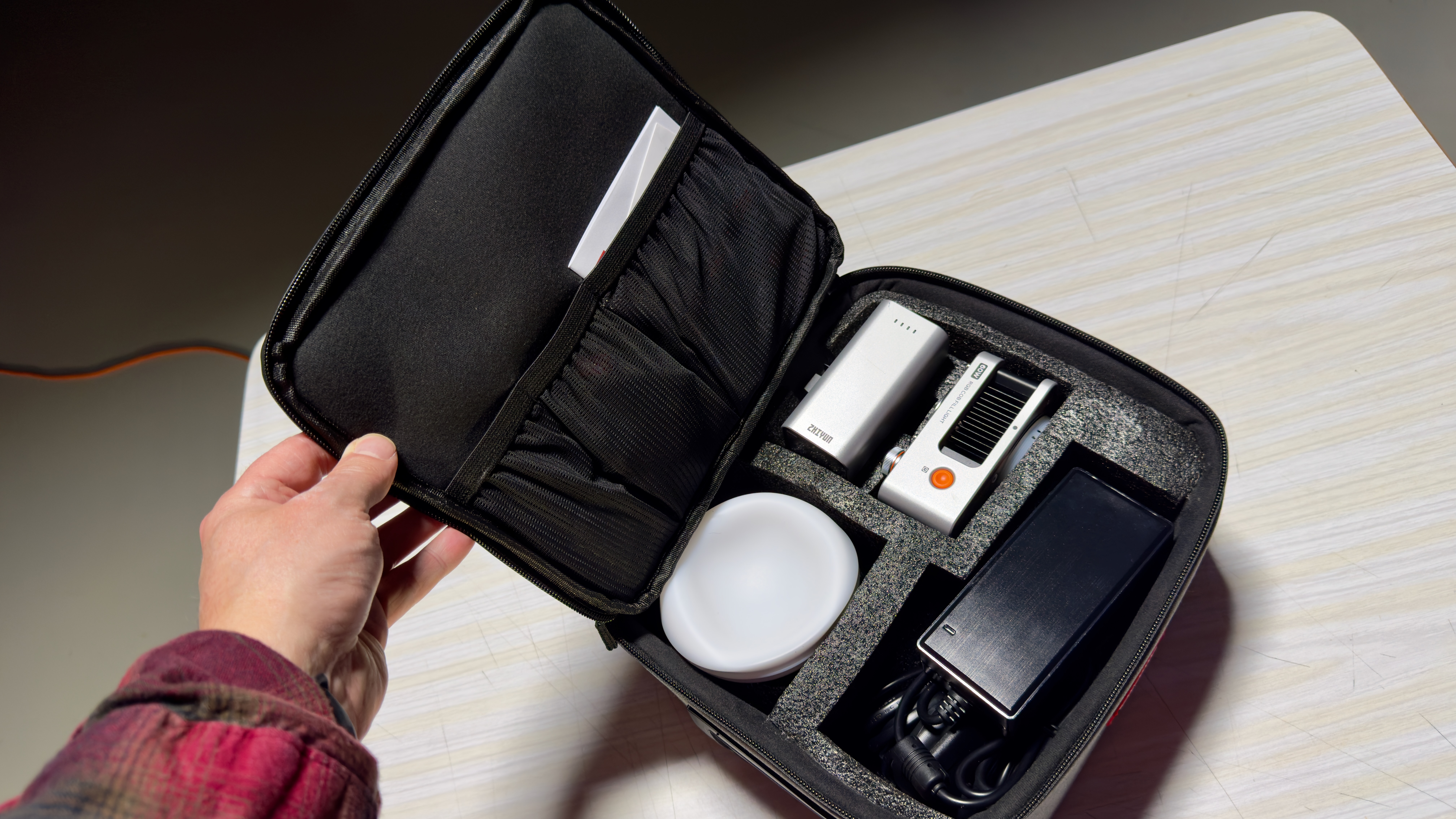
Zhiyun Molus X60: Specifications
| Power rating | 60W |
| Output | 6500K at 1m (X60) 2680 Lux ; (X60-RGB) 2010 Lux |
| Colour temperature range | 2700K - 6500K |
| CRI | ≥95 |
| TCLI | (X60) ≥97; (X60-RGB)=98 |
| Preset effects (X60) | SOS. Paparazzi, TV, Bad Bulb, Lightning, Candle, CCT Loop, CCT Flash, CCT Pulse |
| Preset effects (X60 RGB) | Firework, Disco, Police Car, Hue loop, Hue Flash, Hue Pulse, Paparazzi, TV, Bad Bulb, Lightning, Candle, CCT Loop, CCT Flash, CCT Pulse |
| Battery Life | 50 mins (at 100%) |
| Size (without attached battery): | 100 x 71 x 56 mm |
| Weight | (X60) 313g ; (X60-RGB) 319g |
Zhiyun Molus X60: Price
The standard Molus X60 costs $199 / £163. It’s comparable in size and shape to the similarly specced SmallRig RC 60B - but that portable handheld LED costs a little bit more, making the X60 a more appealing LED for those on a budget. The X60 RGB costs around $50 / £40 more than the X60, but it’s well worth paying a little extra to enjoy the RGB version’s wide range of hues and color-based animated video effects.
Zhiyun Molus X60: Design & Handling
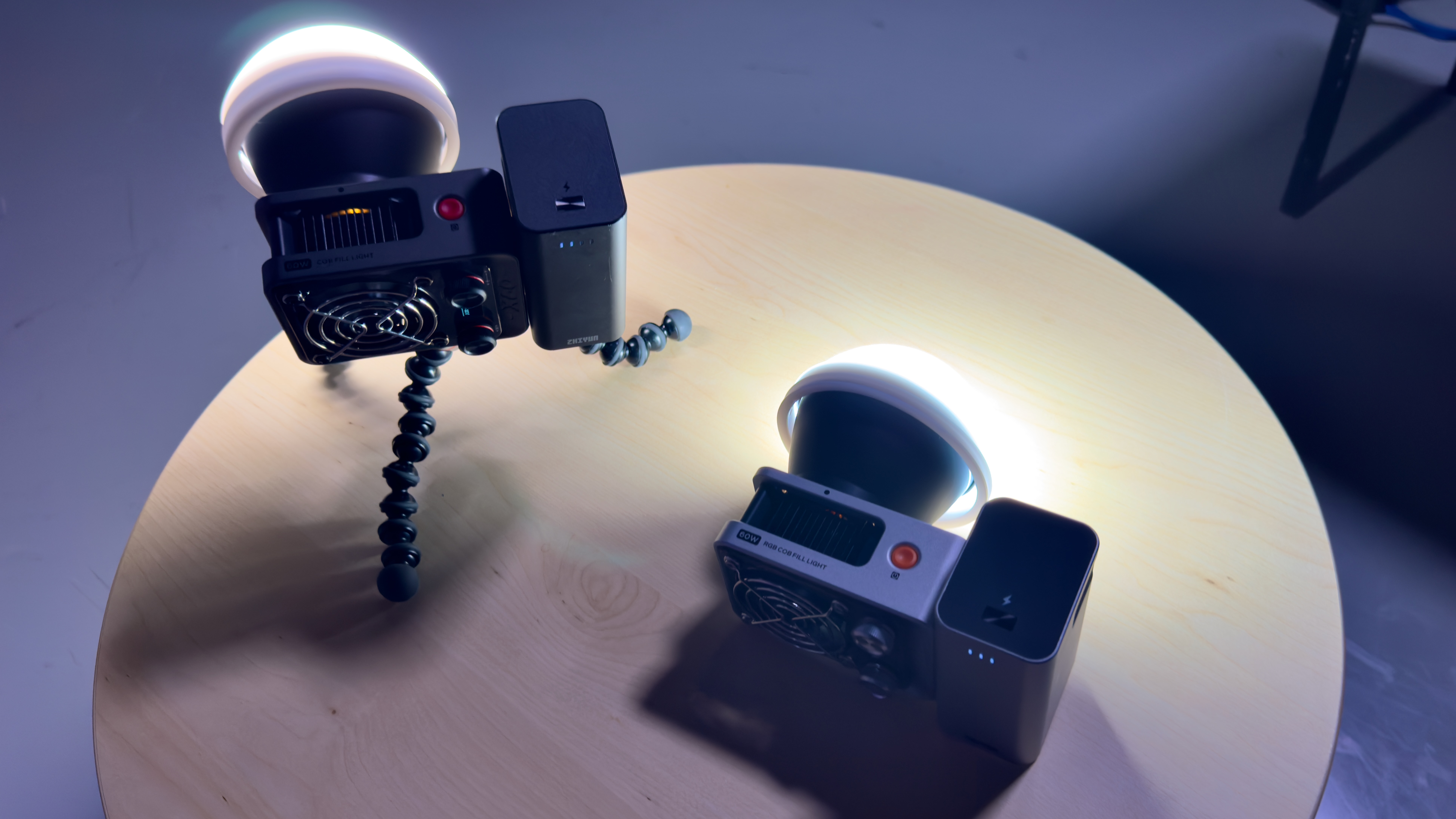
Both the Molus X60 and the X60 RGB lights fit nicely into the palm of your hand, and although their bodies feel predominantly plastic they are reassuringly heavy due to a recessed metal grid and a metal fan protector that enable the DynaVort cooling system to dissipate heat.
Once you clip the similarly sized battery to each LED you can still carry it comfortably in one hand, though the batteries are heavier than the lights. The X60 RGB and its battery are silver in color, whereas the X60 version’s lamp and battery are mostly black.
Both versions of the X60 ship in an identically sized padded and branded Zhiyun kit bag that has foam partitions to separate and store the supplied mains power cable and a mini reflector with a diffusion dome for a softer light source. The carry cases can be bulky (especially if you want to fit two light kits inside your camera bag), so Zhiyun supplies a smaller mesh bag to transport your LED and battery.
The battery clips on quickly and easily and you can also easily attach and detach the reflector with a twist and click. This makes the LEDs very fast to rig and de-rig.
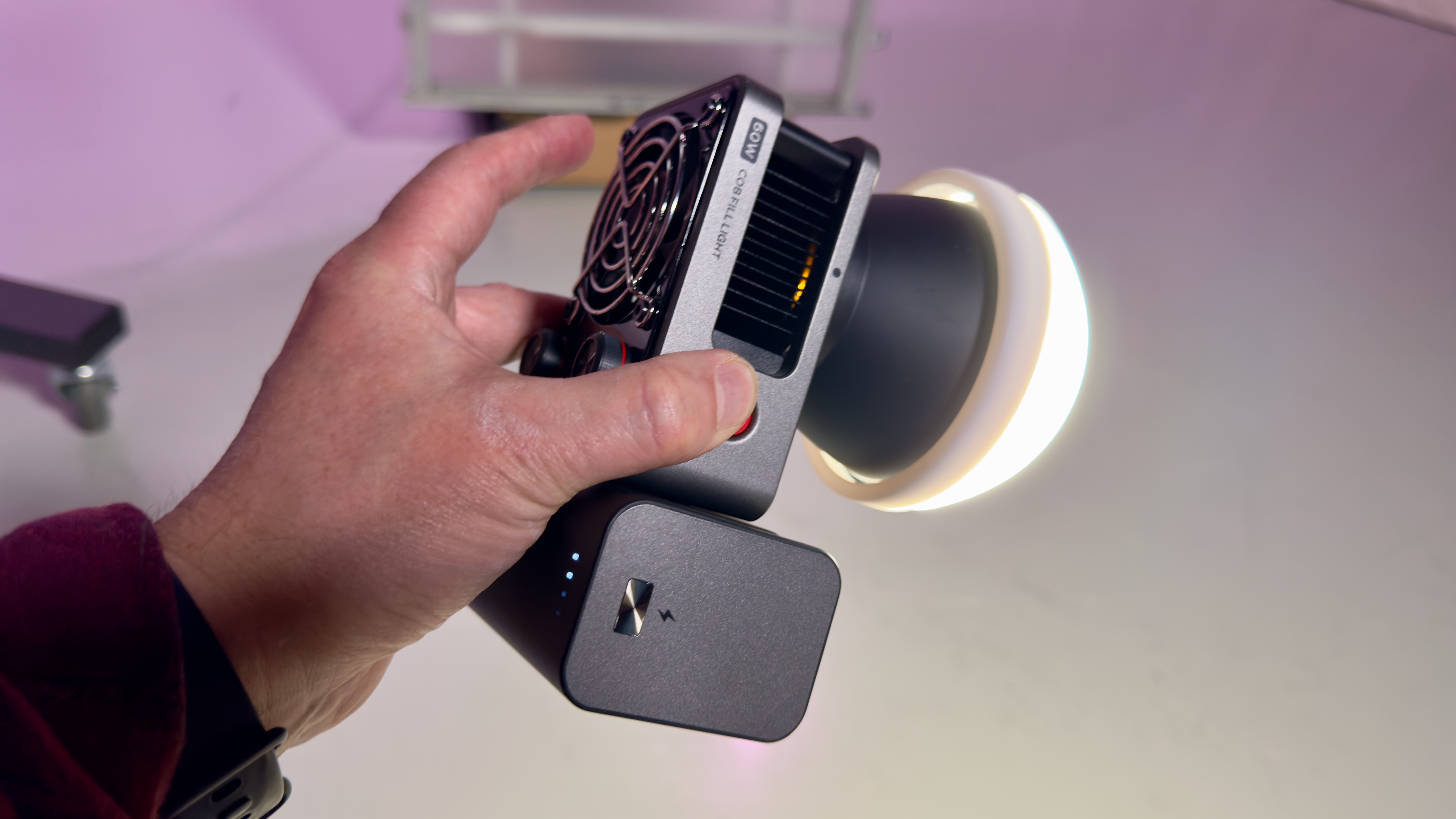
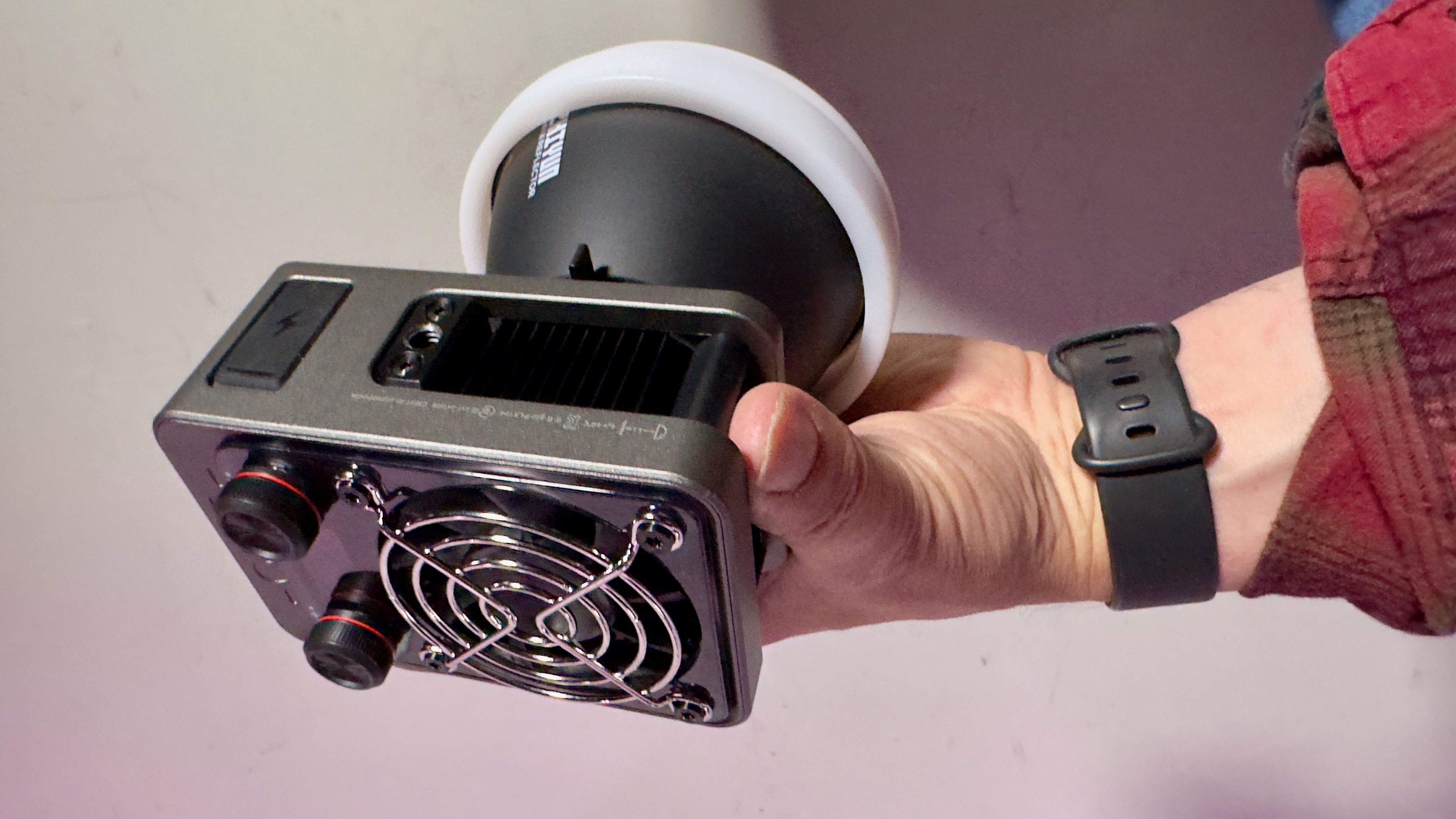
Most Zhiyun LEDs in the Molus range (such as the mighty Molus G500 studio light - review coming soon) have two plastic control dials. The X60 LEDs are no exception. One dial enables you to adjust brightness, while the other changes properties such as color temperature. On the X60 RGB version, the second dial also enables you to adjust properties such as Hue and Saturation so that you can add creative washes of color to your subject.
The dials double up as buttons that you can press to choose animated modes to enhance video clips (such as Disco or Fireworks on the RGB model), or summon simpler animated effects on the X60 such as Lightning or Bad Bulb. The animated effects on the X60 vary between a color temperature range of 2500K - 6500K, but for a wider range of color-related effects make sure that you buy the X60 RGB model (and it’s only around $50 / £40 more than the standard X60 version).
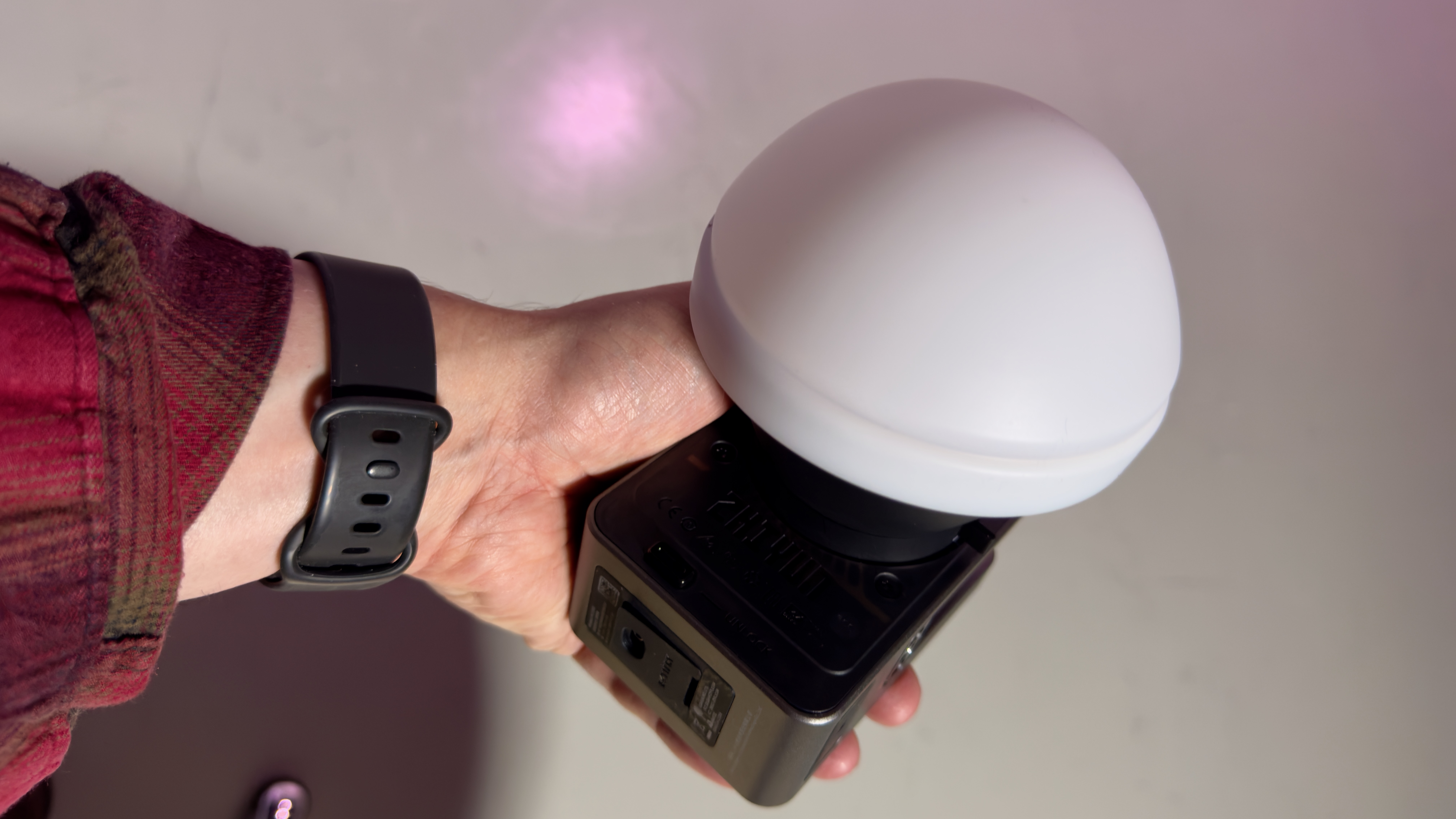
Zhiyun Molus X60: Performance
To test the Zhiyun Molus X60 and the X60 RGB I took both lights with me on a model shoot. Despite lovely sunny weather for most of the week, there was a 70% guarantee of rain on the day of the shoot, so I relocated to the gloomy (but dry) walkways of London’s Barbican center.
I enjoy shooting in the Barbican as the curves and lines of the concrete brutalist architecture contrast nicely with a posing model. However, on a gloomy day and in dark corridors my iPhone 15 Pro Max can struggle to capture a non-grainy motion blur-free shot. For that reason, I was delighted to take the two powerful (yet portable) X60 LED lights with me. Both X60s had a 1/4” thread so I was able to mount then on mini tripods and point them at the model.
A gust of wind did knock one of the lamps over when it was mounted on a Joby GorillaPod, but the LED was undamaged. (I also dropped an LED on a later studio shoot from a meter in height but again it was robust enough to carry on shining).
The 60W output of both lights was more than bright enough to cast plenty of light on my model for both close up portraits and ‘strike a pose’ long shots. The kit’s supplied rubber diffusion dome enabled me to add a soft and flattering modeling key light to the subject’s face, while the second X60 light filled in harsh shadows or acted as a backlight to help the model stand out from dark backgrounds.
The RGB version of the Molus X60 in particular was very useful as I could dial in creative color hues to complement or contrast with existing colored light sources on location. Being able to dial in a range of color temperatures with the standard Molus X60 enabled me to complement the cold daylight, or add a warmer hue to counteract the dull weather.
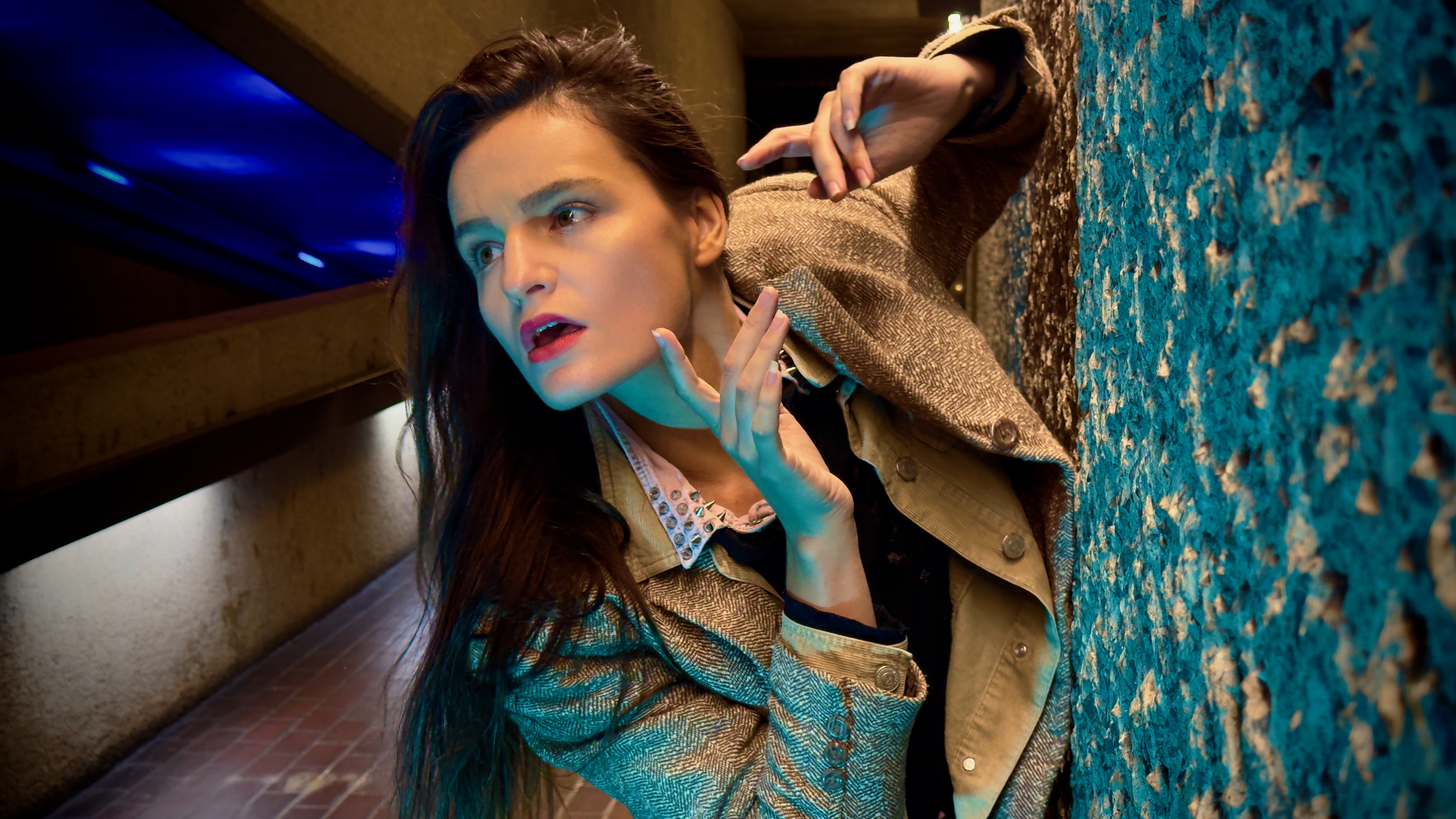
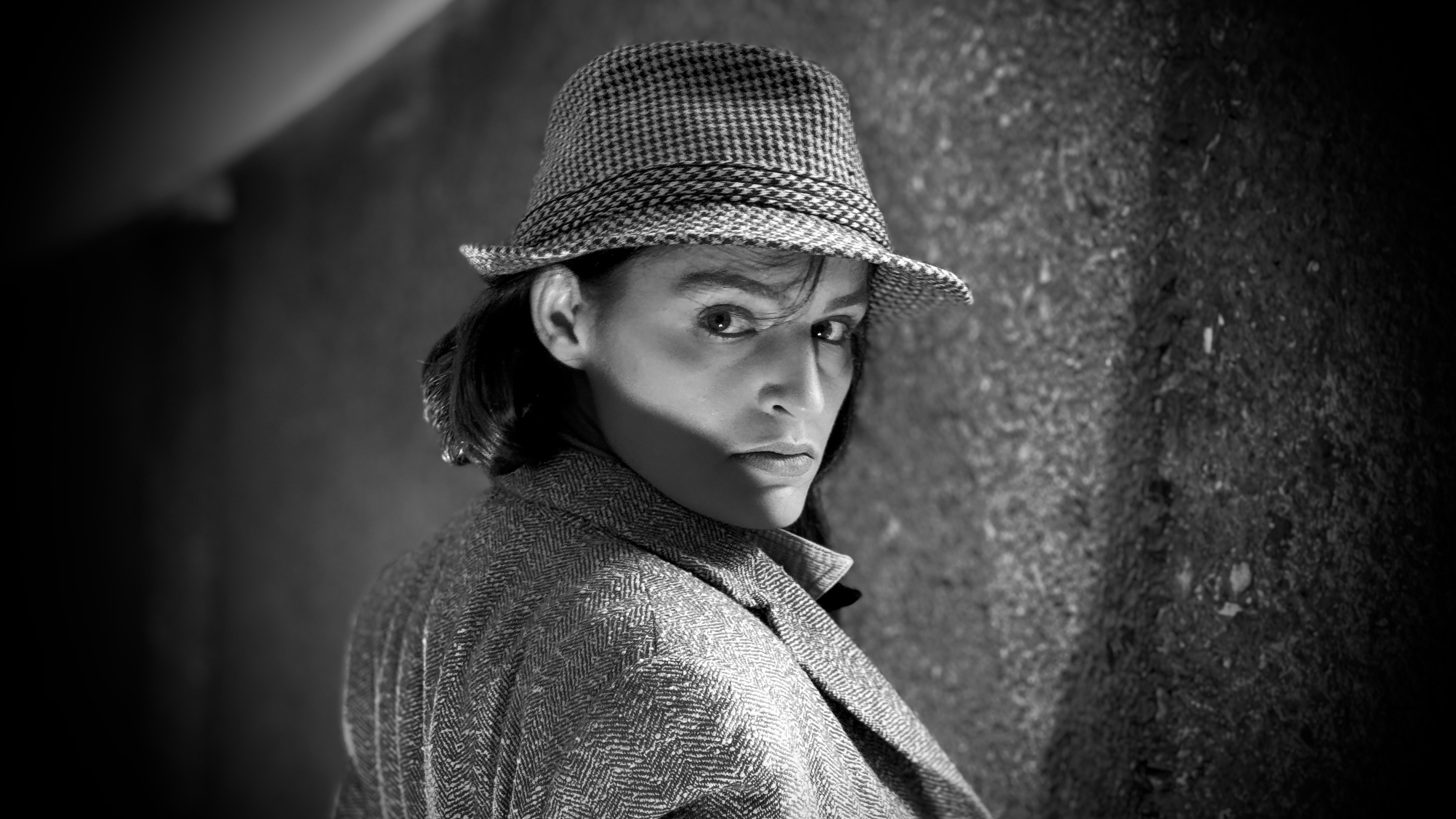
Although I wasn’t shooting much video I set the Molus X60 RGB to Disco mode. This emitted cycling bursts of different colors and as my model changed her pose every few seconds this was a quick way to capture a wide range of poses featuring different color hues (rather than having to dial in various colors manually).
The LEDs are kept cool using a DynaVort cooling system. Up close I could hear the fans whirring, but as the lights are strong enough to shoot a ‘talking head’ from a distance any whirring sounds should be negligible. I wasn’t aware of any fan noise on location as I was focussing on shooting stills anyway. I had the model booked for a two-hour shoot so the LEDs’ 50-minute battery life could have been an issue. However, we turned the lamps off when moving between several locations so there was plenty of power when it was required.
I also used one of the Molus X60s when I was reviewing the larger Zhiyun Molus B500 in a TV Studio (review coming soon). Most of the studio’s house lights were on low, but the small Molus X60 acted as an effective key light to illuminate me and the G500 as I demonstrated its features.
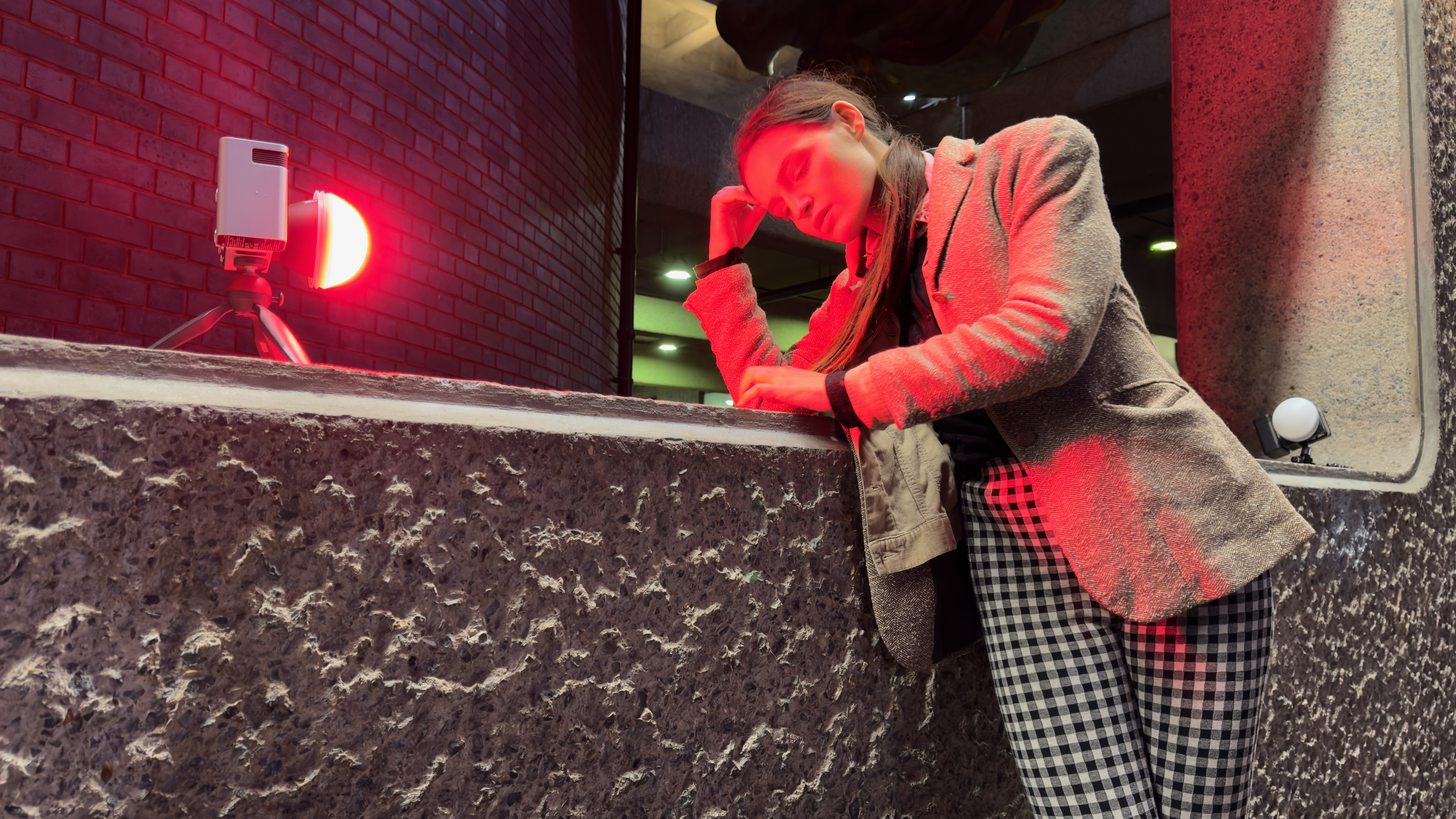
Zhiyun Molus X60: Verdict
If you have to rely on available light when on a shoot then you’re limited in your compositional choices. By having a powerful yet portable key or fill light such as the Zhiyun Molus X60 (or X60 RGB) in your kit bag you can add bring out the shape and form of your model’s face to create much more professional looking portraits. The RGB version of the X60 also enables you to add creative washes of color to change the mood and atmosphere of your portraits.
Videographers will also enjoy the animated effects produced by both lights, but we strongly urge you to spend a little more and get the 6 extra color effects on the RGB version, especially if you shoot dramas and need a police car to appear (off camera)!
I’ve shot the same model in the same location twice before but the quality of my photos was elevated to a new level thanks to the addition of the Zhiyun Molus X60 and X60 RGB LEDs.
| Features | The additional colour control options of the RGB model give it the edge over the standard version. | ★★★★★ |
| Design | Both lights enjoy a compact design combined with easy to control buttons and dials. | ★★★★☆ |
| Performance | The X60’s are easy to transport yet pack a powerful punch. | ★★★★★ |
| Value | Both lights are reasonably priced but for a little extra you can enjoy the colour options on the RGB version. | ★★★★★ |
✅ Buy this if...
- Both versions of the Molus x60 are lightweight and portable.
- Both versions emit a strong key or fill light source.
🚫 Don't buy this if...
- Don’t buy the standard X60 version of you need to change colour hue.
- You need to shoot via battery for more than 50 minutes.
Alternatives
SmallRig RC 60B COB LED
The SmallRig RC 60B is a COB (chip-on-board light) that looks and behaves more like a typical studio light, yet like the Zhuyin Molus X60 LEDs, you can also hold it in your hand and add light to portrait shoots on location. Unlike the X60’s clip-on battery, the RC 60 B has a built-in one that you can charge via USB-C. As a 60W bi-color light you can adjust the RC 60 B’s color temperature to complement daylight or indoor light sources but it lacks the creative colors produced by the RGB version of the Molus X60.
Hobolite Micro Creator Kit
The Hobolite Micro Creator Kit is another palm-sized LED light, though it only packs 20W of power compared to the Zhiyun Molus X60’s 60W output. However, it does a good job of illuminating portraits in any location thanks to its built-in battery. Like the standard Molus X60, the Hobolite Micro is a bi-color light, so you can only change its color temperature. However the Micro ships with a collection of 6 magnetic colour gels that enable you to change the mood of your images.
George has been freelancing as a photo fixing and creative tutorial writer since 2002, working for award winning titles such as Digital Camera, PhotoPlus, N-Photo and Practical Photoshop. He's expert in communicating the ins and outs of Photoshop and Lightroom, as well as producing video production tutorials on Final Cut Pro and iMovie for magazines such as iCreate and Mac Format. He also produces regular and exclusive Photoshop CC tutorials for his YouTube channel.
